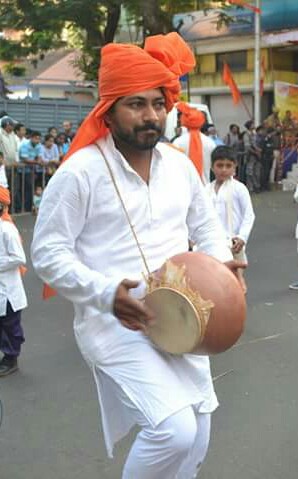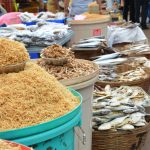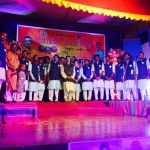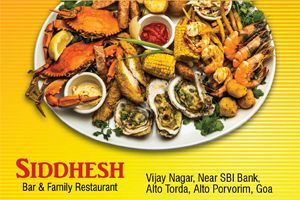RAHUL KAMAT
Ghumat forms an integral part of Goan folk music. Team TNV speaks to Manoj Parab a young Goan who is on a mission to unite Goans in the spirit of Goemkarponn through this musical instrument.
Q. What inspired you to promote Ghumat?
– In a time when we have people talking about Goem and Goemkarponn, we met another Goemkar whose name is Mr Marius Fernandes. Marius Fernandes suggested us if we can have a Ghumatanche Fest similar to that of other festivals such as Patoleanche Fest. When I heard his idea, I said ok. We had many youngsters with us and we decided to go ahead with this idea. We had a discussion within our group to plan how to go ahead with this idea. We had decided not to have this festival on a commercial scale as our main aim was to unite Goans in the spirit of Goemkarponn through this musical instrument. And Ghumat being a Goan instrument and only musical instrument made out of mud we decided to promote it.
Q. Why only Ghumat?
– A speciality of Ghumat is that it is a symbol of Goan unity. For example, a Harmonium or a Tabla is used only during Hindu festivals while some other instruments like Guitar or a Violin is used during Catholic celebrations. Ghumat is the only instrument which is used by the people of both the communities. Ghumat is used for Mando and even for Aartis especially during Ganesh Chaturthi. Even for Zaagor people from both the communities come together and play this instrument.
Q. Your group had recently organised Ghumatanche Fest. What was the uniqueness of this festival?
– The festival that we had organised was fully eco-friendly. We hosted Ghumatanche Fest without asking for any donations or sponsors, there was no chief guest. There were no prizes nor a competition of any sort, the reason being that our aim was just to get everyone together. In a competition there is a winner and a loser, and we didn’t want anyone to lose and go home sad. We wanted that the people should take only good memories from this festival.
Q. What are your plans to promote this instrument?
– In recent times the number of artists who play Ghumat have been decreasing day by day. Even if we want to export the instrument we face a problem as opening of the instrument is covered with the skin of monitor lizard. So now we have come up with an idea to promote this instrument covered with the skin of sheep and goat and we have already started working on it. We have also associated with Global Goan Association and they are already working out on a plan to export this instrument in the international market. If we are successful in exporting and promoting Ghumat in the international market then there will be a good employment opportunity for the people who make this instrument, and we can undertake the production of this instrument on a larger scale.
Q. What is your plan to attract maximum number of Goan youth towards this instrument?
– We want to tie-up with schools so that we can introduce Ghumat playing as a part of extracurricular activity in schools. If the schools provide us a classroom we have some members in our group who are ready to go to the schools to teach this instrument. And even parents will look forward to send their children as it will be a part of extracurricular activity of the school.
Q. Since you are planning to promote this instrument, people will also be interested to know the history of Ghumat. Would you highlight a brief history about this instrument?
– The history of Ghumat goes back even before the Portuguese arrived Goa. It was a mud instrument developed by Goans. The instrument was used in the first Carnival after the Portuguese left Goa. In the olden days there were no loudspeakers so the people had developed this instrument and it was the only musical instrument traditionally used in Mando and Zaagor. So we can say that along with Konkani and our beautiful coconut trees Ghumat is also the identity of Goa.
Q. What kind of support are you expecting from the state government?
– The government support would be of the utmost importance if we want to promote this instrument. We are even planning to meet the state Art and Culture Minister and submit a memorandum to declare Ghumat as the state musical instrument.
Q. After the success of Ghumatanche Fest what is your next project?
– In the next few months we are coming up with an initiative called ‘ghara gharan Ghumat’. Under this initiative we would like to make an appeal to every Goan to keep a Ghumat in their homes, at least as a showpiece and a way to preserve our culture. Even our future generation should know about this instrument.



























